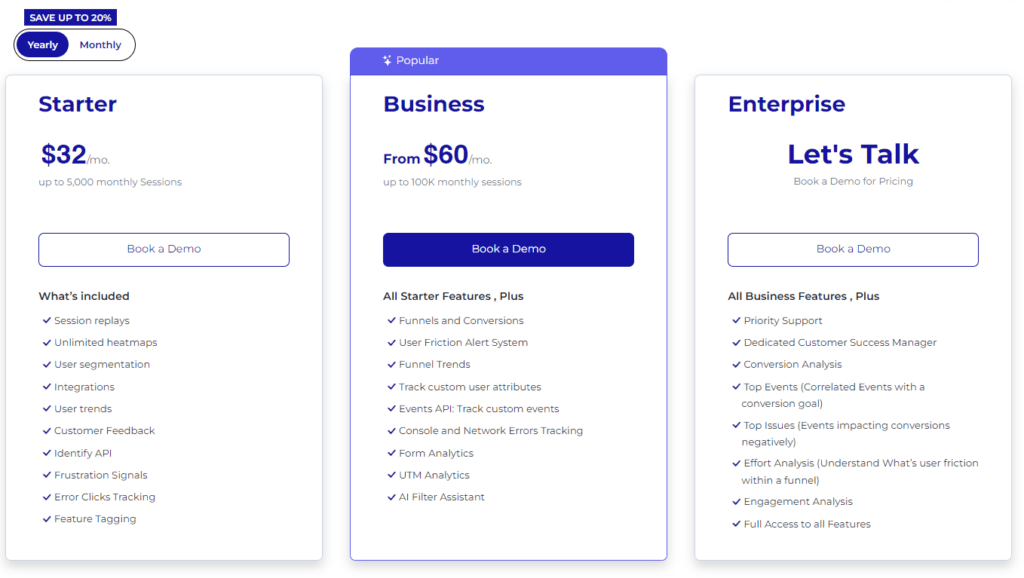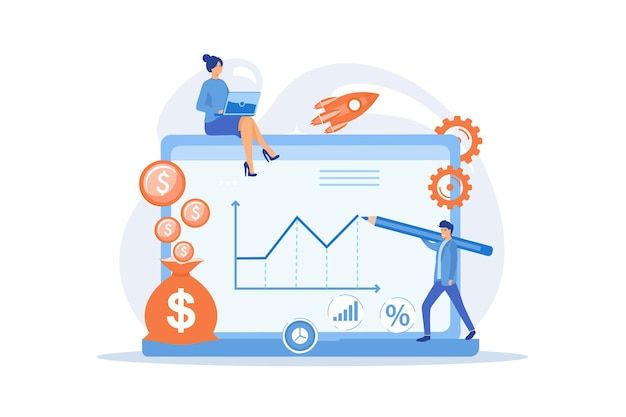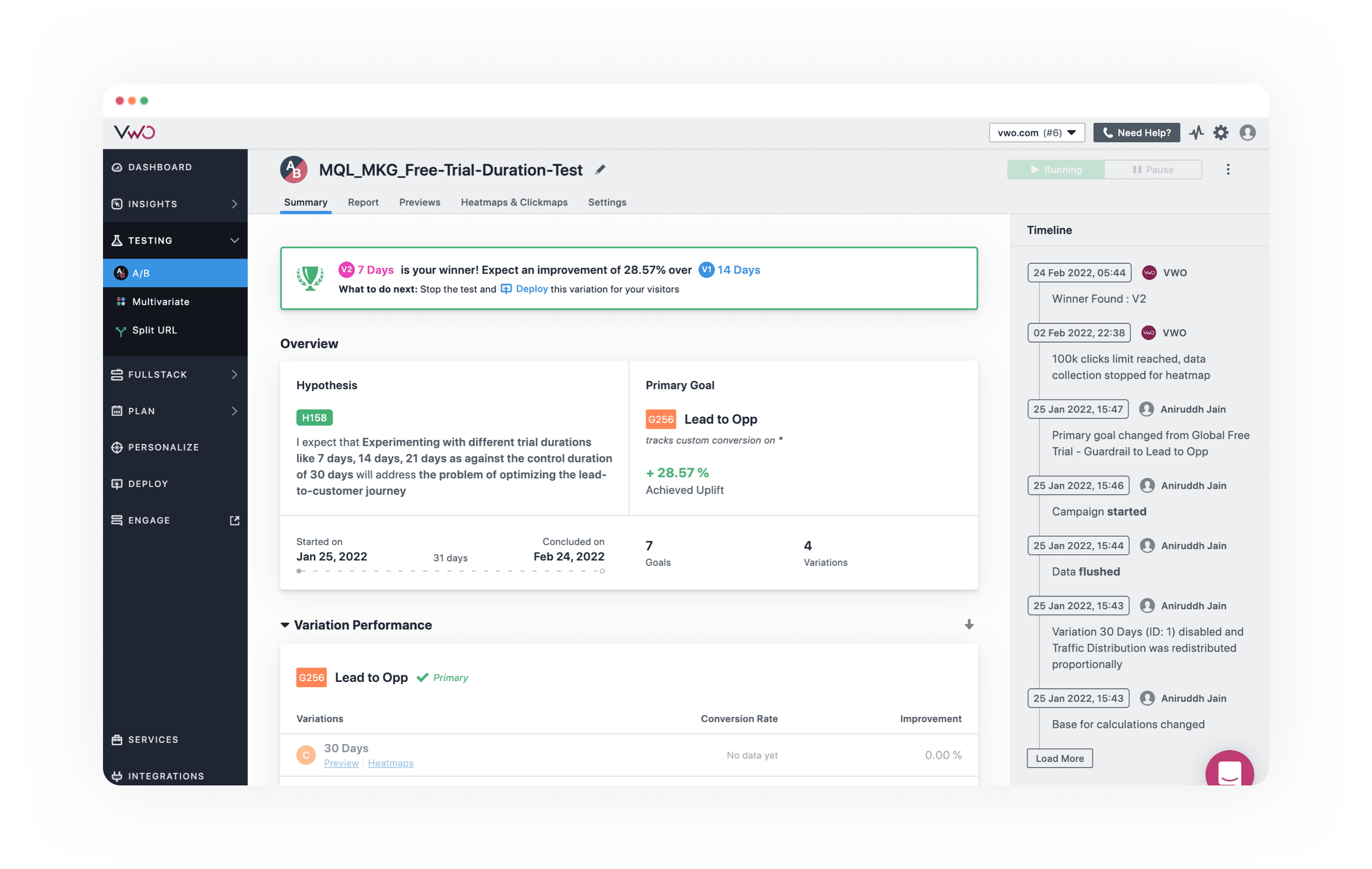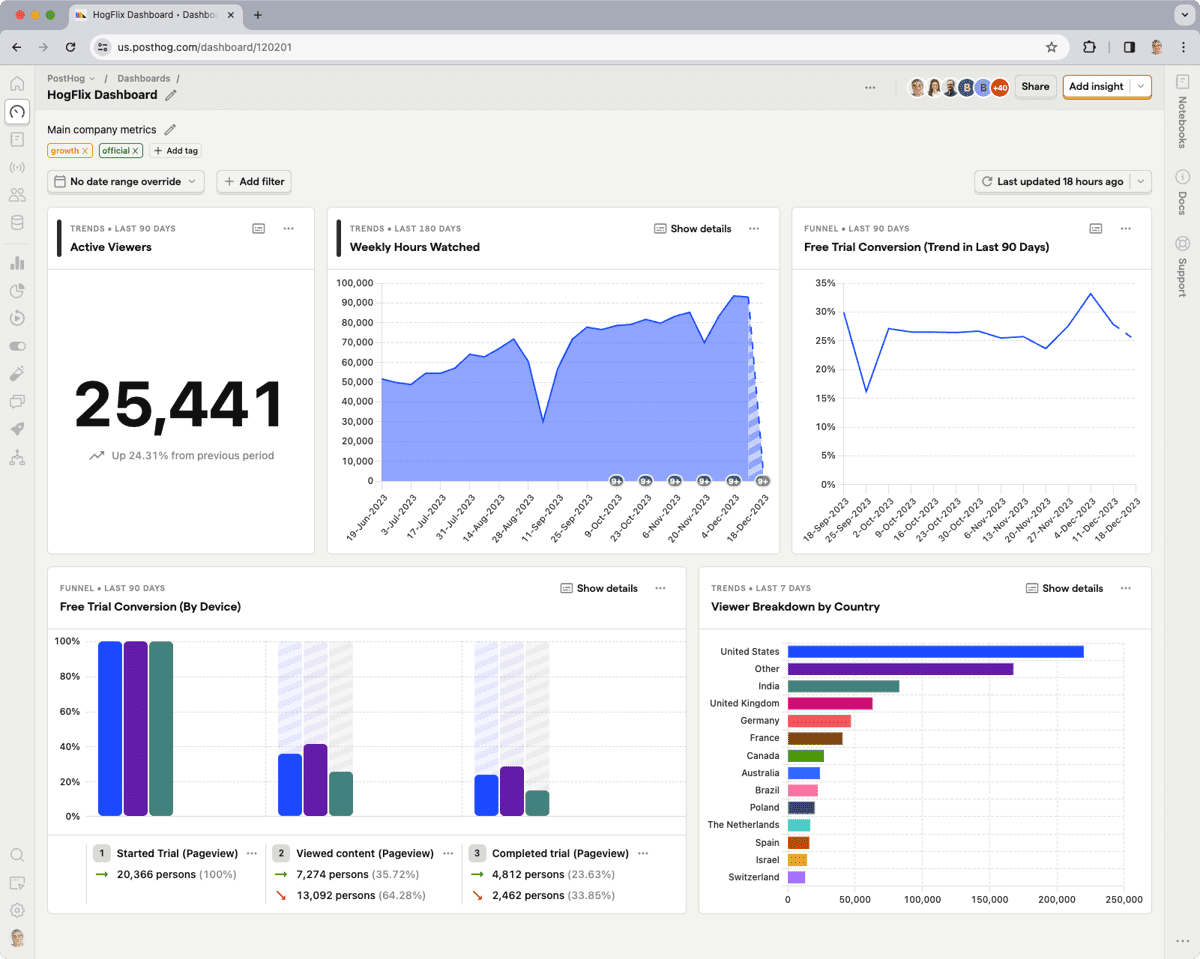Are you looking to optimize your website's performance but unsure if VWO is the right choice? You're in luck! We've compiled...
Regardless of what your business is offering, the number of people who become successful conversions ultimately affects your bottom line and, in turn, your overall business health. As a business leader or marketing manager, your job is to find out what affects that number and figure out how to maximize it.
Let's start with the end goal: conversions. Within these successful conversions are two types of actions: macro conversions and micro conversions. What exactly are these subtypes, and why do they matter? And if we look at the bigger picture, which is more important?
In this article, we’ll answer all of these questions.
What is a Macro Conversion?
A macro conversion is your business's main goal; it's the action you're leading customers toward by optimizing your conversion funnel. Usually, a macro conversion means a sale or purchase.
However, macro conversions can differ depending on the business type. Here are a few examples:
- e-Commerce: Completing a purchase or signing up for a subscription service.
- B2B: Requesting a demo or trial or filling out a contact form for more information.
- SaaS Companies: Subscription to a paid plan or renewal of a subscription.
- Real Estate: Scheduling a viewing appointment or submitting a mortgage pre-approval application.
- Blogs: Subscribing to updates or purchasing an affiliate product.
- Events and Conferences: Purchasing a ticket or signing up for VIP or premium access.
In other words, a macro conversion is an action that leads to your business earning money or a customer's commitment to purchasing from you in the future.
What is a Micro Conversion?
On the flip side, micro conversions are smaller actions that, while not immediately revenue-generating, indicate a user's interest and engagement with your site. Examples of micro conversions might include:
- Signing up for a newsletter
- Downloading a white paper or e-book
- Creating an account
- Watching a demo video
Micro conversions are the stepping stones that guide a visitor toward the ultimate goal of a macro conversion. We can divide micro conversions into two categories:
Process-Based Micro Conversions
These are small actions that prospects make along the customer journey that indicate they intend to convert at some point in the future. Examples of process-based micro-conversions include:
- Adding card information to their account
- Viewing a pricing page
- Using a tool or calculator on your website
- Downloading a trial version
- Adding items to their cart
Engagement-Based Micro Conversions
On the other hand, secondary or engagement-based micro conversions indicate that a customer is actively engaging with your business but don't directly lead to a macro conversion.
However, these actions show that the customer is engaged with your product and service and might move further down the conversion funnel in the future. Secondary micro-conversion examples include:
- Subscribing to your newsletter
- Following you on social media
- Spending a significant amount of time on informative content
- Commenting on a blog post or participating in a forum
- Service queries
Macro and Micro Conversions: What's the Difference?
Macro and micro conversions are two sides of the same coin in digital marketing. Each represents a different type of customer action that collectively paints a comprehensive picture of your marketing's effectiveness and the customer journey.
But what are the specific differences between these two types?
First, macro conversions have a direct impact on a business’s main goals and revenue, while micro conversions are steps along the user's journey that lead up to a macro conversion.
Secondly, macro conversions represent a high level of commitment and engagement with the brand or product, usually culminating in a transaction or agreement. Micro conversions, however, indicate preliminary engagement and interest, showing that a user is considering a brand's offerings.
Now, how do micro and macro conversions play out in conversion rate optimization?
For macro conversions, optimization efforts are focused on converting leads into customers or achieving the end goal. With micro conversions, the focus is on improving the customer experience and engagement to guide users through the sales funnel gently.
Tracking Micro Conversions and Macro Conversions: Why Does it Matter?
Generally speaking, you should track micro conversions and macro conversions simultaneously. Macro conversions are ultimately more important because they represent the end goal for your customers. However, that doesn't mean micro conversions should take the back burner.
The key is to balance your macro goals with your micro goals. Focus on your macro conversions to optimize your overall conversion rate and, in turn, improve your bottom line. But don't forget those micro conversions—these might be secondary goals, but they help push customers down the funnel.
Tracking both micro and macro conversions can help your business unlock the following advantages:
1. Optimizing the Customer Journey
By tracking micro conversions, you can identify where potential customers drop off or experience issues, allowing you to smooth out these friction points and improve the overall user experience.
Plus, understanding the steps users take before a macro conversion helps you optimize these pathways or customer journeys, making it easier for other users to follow in their footsteps.
2. Better Audience Segmentation and Personalization
Tracking micro conversions helps you understand the different intents behind user actions, enabling you to segment your audience more effectively based on their behavior.
With better segmentation, you can personalize your marketing messages, ads, and content to match the specific interests and behaviors of different user segments, increasing the likelihood of conversion.
3. Improving Marketing ROI
Knowing which micro conversions lead to macro conversions allows you to allocate your marketing budget more effectively and focus on channels and strategies that drive meaningful engagement.
From there, you can refine your ad campaigns to target behaviors that are more likely to lead to sales, which improves your return on ad spend.
4. Gaining a Holistic View of Performance
While macro conversions show the end goal, micro conversions offer insights into the journey. Together, they provide a holistic view of your website's performance and user engagement.
This comprehensive tracking enables a cycle of testing, learning, and optimizing, ensuring continuous improvement in your strategies and website design to meet user needs and business goals better.
5. Supporting Long-Term Growth
By acknowledging and optimizing for micro conversions, you’re effectively nurturing potential customers and building a relationship with them even before they make a purchase.
Each micro-conversion is an opportunity to engage with your audience, creating multiple touchpoints that can increase brand recall and loyalty and support long-term growth.
The Role of Macro and Micro Conversions in Conversion Rate Optimization (CRO)
We've discussed the key benefits of tracking macro and micro conversions simultaneously. However, how do these conversion types affect your conversion rate optimization strategy?
Macro Conversions: The Ultimate Goal
Macro conversions, such as completing a purchase or signing up for a service, serve as the ultimate benchmarks for the success of a CRO strategy. They are the end goals that directly impact a business's bottom line.
CRO efforts are often centered around increasing the rate at which website visitors complete these macro conversions. This includes optimizing landing pages, checkout processes, and lead capture forms to make it as easy as possible for users to complete the desired action.
Micro Conversions: The Pathway to Success
Micro conversions offer detailed insights into how users interact with a website before they reach a macro conversion. Tracking actions like page views, downloads, and time spent on the site helps identify what attracts and engages users.
By analyzing your micro conversion rate, you can pinpoint areas of the website that are performing well and those that need improvement. This can involve optimizing content, improving navigation, or enhancing the user experience to encourage more users to take the steps that lead to a macro conversion.
Balancing the Two in CRO
Integrated Strategy
An effective CRO strategy balances the focus on both macro and micro conversions. While the ultimate goal is to increase macro conversions, understanding and optimizing the pathways through micro conversions is crucial for guiding more users to that endpoint.
Testing and Personalization
Using A/B testing and personalization based on user behavior and micro-conversion rates allows businesses to create more targeted and effective conversion paths.
For instance, if data shows that users who watch a demo video are more likely to sign up for a trial, businesses can optimize their site to encourage more users to watch the demo.
Incremental Improvements
CRO is about making incremental improvements that collectively enhance the user journey toward a macro conversion. Focusing on improving micro conversions can help you make small, data-driven changes that significantly impact overall conversion rates.
How to Monitor Micro and Macro Conversions
Monitoring your macro and micro conversions requires a similar approach to tracking just about any key metric you can think of. Here's a general approach to tracking macro and micro conversion rates:
Start with Quantitative Data
On the quantitative side, tracking includes measuring conversion rates—specifically, the percentage of visitors who complete both macro conversions (like sales or sign-ups) and micro conversions (such as newsletter subscriptions or adding items to a cart).
For example, you can use product analysis tools to measure the number of macro conversions you're getting within a specific period. If your business model centers on sales, use Google Analytics to gather valuable insights on what and how much your customers are ordering.
You may have to use multiple analytics tools to measure micro-conversion events, as these can vary far and wide. Use tools like FullSession's website heatmaps and session recordings to see how users interact with your website and identify actions that improve your conversion rates the most.
Track Qualitative Data
Quantitative data tells you the "what, when, where, and how," while qualitative data shows you the "why."
Qualitative data can be gathered through various means such as user feedback collected via surveys, feedback buttons, or direct interviews, which help in understanding the user experience and any conversion barriers faced.
For example, you can use FullSession's session recording feature to watch a failed conversion. The quantitative data tells you this user dropped off at the checkout page.
With a recording, you can look for clues as to why this happened--perhaps confusing shipping information or an extremely slow-loading checkout page.
Map the Customer's Path
Creating a customer journey map (CJM) offers a visual overview of all the touchpoints customers encounter, from discovering a product page to adding an item to the cart and entering their payment information.
This visualization is crucial for identifying process-based micro-conversions and understanding how these smaller interactions cumulatively lead to significant macro-conversions. Additionally, it illuminates which micro-conversions have the most direct impact on your bottom line, allowing for targeted optimization efforts where they're most needed.
To construct a CJM, start by gathering insights directly from your customers. Use good survey questions to ask users how they first heard about your business, providing a foundation for understanding the initial steps of the journey.
Then, use tools like FullSession to create surveys and delve into their navigation paths, revealing how they find and interact with your site. This data should include the pages they visit, the order of these visits, and any repeat interactions that may occur before a conversion.
Iterate and Optimize Regularly
All this work boils down to regular synthesis of your data and optimization of your conversion funnel. This final step is where the rubber meets the road, turning data-driven insights into actionable changes that enhance the user experience and streamline the path to conversion.
Targeted adjustments should be made to eliminate any identified barriers that may be blocking potential conversions. This could involve redesigning certain elements of your website, tweaking your content strategy, or adjusting your navigation structure to make key actions more intuitive for users.
However, before rolling out major changes, it's important to employ A/B testing to validate your hypotheses about what will positively impact your conversion rates.
This methodical approach allows you to compare the performance of your current website or campaign elements directly against the proposed changes, ensuring that any modifications you implement are based on evidence of their effectiveness.
Upgrade Your Marketing Strategy with Data-Driven Insights
Macro conversions have economic value for your business, while micro conversions are secondary actions that may lead to primary conversions but don't necessarily generate revenue. Both are important and will affect your bottom line.
If you want to optimize your conversion funnel, the best first step is to track your macro conversion rate and the micro conversions that contribute to it. FullSession gives you a full stack of tools to do just that, including:
- Interactive heatmaps
- Session recordings and replays
- Market filtering and segmentation tools
- Customer feedback tools
FullSession Pricing Plans

The FullSession platform offers a 14-day free trial. It provides two paid plans—Basic and Business. Here are more details on each plan.
- The Starter plan costs $39/month or $32/year and allows you to monitor up to 5,000 monthly sessions with up to 6 months of data storage.
- The Business plan costs $75/month or $60/year and helps you to track and analyze up to 100,000 monthly sessions with up to 12 months of data storage.
- The Enterprise plan has custom pricing and offers customizable sessions plus full access to all features.
Track Macro and Micro Conversions the Easy Way
It takes less than 5 minutes to set up your funnel optimizing tools, with FullSession, and it's completely free!
FAQs About Micro and Macro Conversions
Can a micro conversion turn into a macro conversion?
In some cases, yes. The goal of tracking micro conversions is to nurture those engagements into macro conversions over time.
Should I prioritize macro conversions over micro conversions?
While macro conversions are your ultimate goal, paying attention to micro conversions is crucial for understanding and improving the user journey toward those larger conversions.
How often should I review my conversion data?
Regularly, but within reason. Monthly reviews are good practice, but some businesses may benefit from weekly analysis, especially if they're making rapid changes to their marketing strategies.





